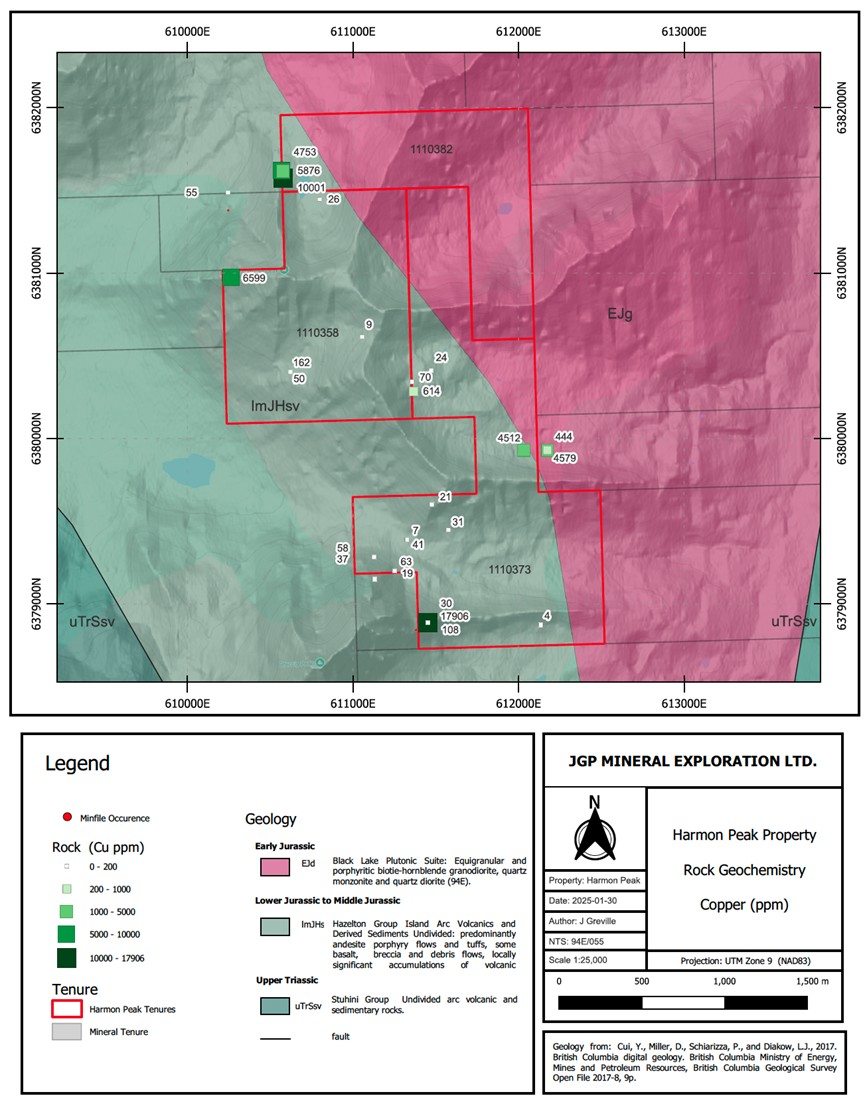Black Pearl Project Highlights
The Black Pearl Project includes the Moose/Harmon area, where historic grab and float samples reported values of up to 100 g/t Au and 68.4 g/t Ag, alongside multi-percent base metals. Nearby carbonate-hosted systems (NUSKARN, McClair, and BR 794) returned strong polymetallic results, including:
- 12.8% Cu, 4.25% Zn, and 90.5 g/t Ag
- 3.8 g/t Ag and 0.42% Cu
- 56.4 g/t Ag, 0.13 g/t Au, and >1% Cu, Pb, Zn
Epithermal-style veins and breccias also occur in this cluster. At the BR showings, assays include 11.7 g/t Au with 73.8 g/t Ag from a 1 m vein (grab), 12.2 g/t Au with 201 g/t Ag and 0.96% Cu from a 20 cm vein (grab), and a chip sample grading 15.7 g/t Au over 0.20 m. Collectively, these results demonstrate a genetic continuum from porphyry through skarn to epithermal settings within the Black Pearl area.
Oxide Summit Project Highlight
The Oxide Summit Project is defined by epithermal vein systems along the Joanna–Gordonia–Falcon trend. Key results include:
- Joanna East: Chip sampling of 13.0 g/t Au, 13.6 g/t Ag, and 0.129% Cu over 0.9 m
- Joanna West: Grab samples up to 5.65 g/t Au, 15.3 g/t Ag, and 0.61% Cu
- Gulch West: Select quartz vein sample of 14.91 g/t Au, 164.9 g/t Ag, and 1.0% Cu
- Gordonia: Chip sampling averaging 30 g/t Ag, 1.9% Zn, 0.43% Pb, and 0.11% Cu over 0.91 m, plus a grab of 5.745 g/t Au and 200 g/t Ag
- Oxide Peak: Quartz–carbonate breccias grading up to 6.85 g/t Au, 282 g/t Ag, and 1.23% Cu (grab); channel sampling of 2.0 m at 1.87 g/t Au and 55 g/t Ag
- Falcon A1: Chip sample of 0.51% Cu and 5.9 g/t Ag over 2.0 m
- Falcon A2: Narrow quartz veins up to 2.72% Cu, 118.2 g/t Ag, and 1.05 g/t Au
These occurrences define a well-developed epithermal vein corridor, comparable in style to systems at Shasta, Baker, and Lawyers.
